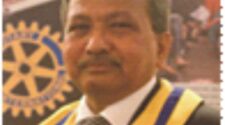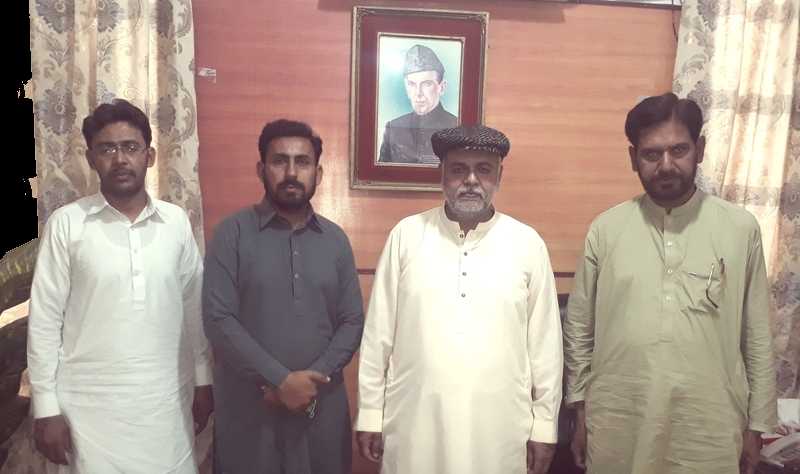By: Nazia Bibi, Zobia Perveen
NATURE:
Anxiety is a topic about which people have a lot of information. Anxiety has earned the greatest fame in clinical psychology and studied of mental disorders. Anxiety refers to an unpleasant sense of fear and restlessness. Generally, it is taken to mean worry. Anxiety is a disease as well as a symptom of mental disorders.
Anxiety disorders are divided into the following kinds:
• Phobia
• Panic disorder
• Generalized anxiety disorder
• Obsessive-compulsive disorder
• Post-traumatic stress disorder
• Acute stress disorder
PHOBIA: Meaningless and irrational fear of things or incidents is known as a phobia. The person suffering from a phobia dreads ordinary and harmless things; he avoids such situation as apparently pose no threat. The word phobia is derived from the Greek god “phobia”. This god frightened the enemies. Now this word is used for pathological fear. Psychologists mention many types of phobia.
i) Specific phobia
ii) Social phobia
Specific phobia: the phobia that Aries from a specific thing and is associated with a particular situation or stimulus are called specific phobia. Beside this, a phobia can be of the following types:
Claustrophobia
Hydrophobia
Acrophobia
Zoophobia
Hematophobia
Apart from this, individual may have a phobia of germs, injections, lifts, tunnels, boats, etc.
Social phobia: A persistent and irrational phobia that relates to other people is called social phobia. General social phobia appears in early childhood. Along with it the individual shows other symbols that may include depression and addiction to drugs.
Causes:
Modelling can also be a cause of it, e.g. the child having seen it mother fear lizards, cockroaches and mice can also develop a phobia of them.
Treatment:
The learning of social skills also helps the individual to overcome a phobia.
Panic disorder:
The typical symptom of panic disorder is sudden fits of anxiety that seize a person again and again. The individual begins to show strange symptoms unexpectedly. He is gripped with unease, fear, terror, and panic as if a disaster were going to happen. The individual suffers panic attack again and again. If an attack of this kind happen in a specific situation. It is called cued panic. For example, one may go into panic while travelling or visiting a hospital etc
Generalized anxiety disorder (GAD):
The patients of generalized anxiety disorder constantly remain restless and agitated. Such patients show deep anxiety at trivial issue and stimuli.
If a person shows six of following symptoms persistently, he is diagnosed to have generalized anxiety disorder.
Trembling and shivering
Muscle tension and aches
Inability to relax
Difficulty in sleeping
Difficulty concentrating
Shortness of breath
Rapid heartbeat and pulse beat
Sweating especially in hand
Dry mouth
Dizziness, diarrhea and other stomach disorders
Causes:
The painful events one has foreknowledge of create less anxiety whereas unexpected painful events cause a lot of anxiety.
Treatment:
All the method used in the treatment of phobia and panic disorders are also effective in treating generalized anxiety disorder.
Obsessive-compulsive disorder (OCD):
This anxiety disorder consists of two phases. In the first phase, the individual obsessed by various thought and fail to get rid of them despite his utmost efforts. In the second phase the individual feels obliged to do a thing and cannot resist repeating it in the spite of his efforts.
Obsession:
Obsessions refer to the recurrent and persistent thoughts that hinder ones performance; they dominate the mind unimpeded and remain out of the individual control.
Compulsion:
Compulsion refers to the repetitive actions that a person feels compelled to perform. The individual does not want to such things but he feels like being coerced into doing them.
In this regard the following actions are observed in daily life:
Paying too much attention to cleanliness and order, spending hours or large part of day in cleaning things.
Ignoring specific things, e.g. staying away from every black and brown thing.
Causes:
Behavioral cognitive theorists believe that obsession and compulsion are an instance of learned behavior the perfuming of which allays a person’s fear. This alleviation of fear serves as a reinforcement for that behavior. For example the individual washes his hand time and again in fear of gems and the washing of hand assuages his fear of germs and he feel relieved. This very relief compels him to wash hands many times so that he may get rid of germs.
Treatment:
The life of a patient suffering from obsession and compulsion is very miserable. They do not desist from compulsive actions despite being the butt of jokes, insults, and derisive remarks. The different techniques in behavior therapy can improve the condition of these patients.
Post-traumatic stress disorder:
This disorder arises from some traumatic event or tragedy. If the individual suffers a serious mishap in his personal life, witnesses a catastrophic tragedy and fail victims to stress in consequence of it then this type of anxiety disorder will be termed post-traumatic stress disorder.
If symptoms related to the mishap persist for more than one month, it is known as a post-traumatic stress disorder.
Causes:
Apart from psychological and biological factors; risk factor also lies behind this disease. The person who himself suffer the trauma or was directly exposed to his life is more likely to have this disorder.
Acute stress disorder:
Different people meet with incidents or mishaps. Every person is adversely affected by them. The individual experiences intense worry, anxiety, and burden.
Theory for an anxiety disorder:
Psychoanalysts believe that all type of anxiety disorders are due to repression. Hence in psychoanalysis, the unconscious experiences of the individual are analyzed so that the reason for repression may be uncovered. The conflict between id and the ego can be ended by removing the reason behind the repression. So this goal can be achieved by free association and by an examination of the patient’s dreams and determine mechanisms.
In behavior therapy, systematic desensitization, modeling, implosive and flooding are used to overcome anxiety fear and other problems.
In biological therapy, different tranquilizers are administered. These medicines can be prescribed only by a psychiatrist.












